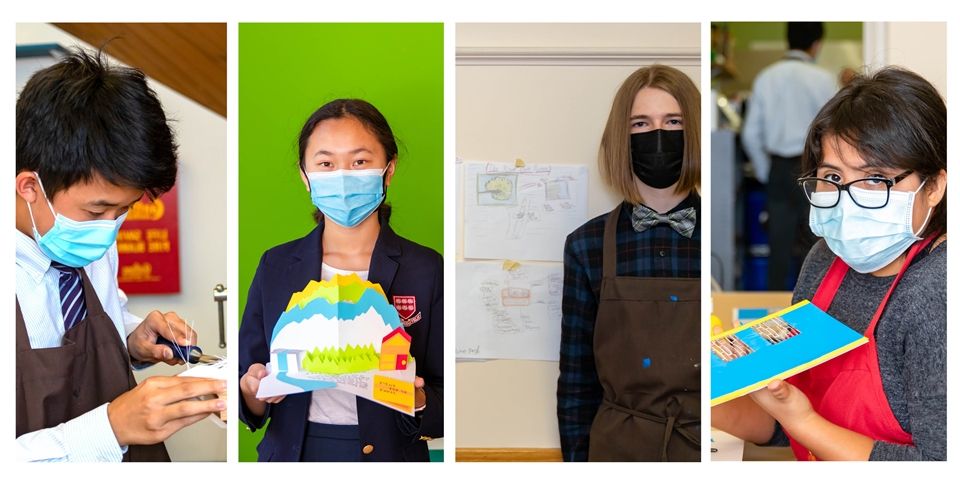贝博体育杂志:2021年夏季

将激情注入设计
Ninth graders share their capstone “passion projects” from this year’s Advanced 3D Design class, where students are given free rein to design and create.
在通常的一年里,高级3D设计激情项目的贝博体彩app是创建一个有形的对象,但由于COVID协议导致创新实验室的时间有限,今年的项目被允许采取物理或概念形式。
这些激情项目不仅体现了九年级设计师的创造力和技术能力,也体现了他们兴趣领域的惊人广度。 学生们有四周的时间进行头脑风暴、研究、设计、改进,然后制作一个谷歌幻灯片,反映从想法到产品的整个过程。
这个过程不仅测试了他们在课堂上获得的设计技能,还测试了他们的项目管理能力,因为他们学会了如何规划时间,设定现实的目标,审查他们的工作,并承担创造性的风险。 这里只是一些项目,先进的3D设计的学生在春季学期工作。
Ethan Z. ’21: Tensegrity Table
Ethan was fascinated by the idea of building a tensegrity table— where structural integrity is based on a network of continuous tension—as it incorporates his passion for design and mathematics. 他在纸上设计了几张桌子,然后才选定最终的设计方案。 在将其发送到3D打印机之前,他使用Sketchup软件确保所有的东西都是按比例准确绘制的,然后喷涂他的底座,并使用精确长度的钓鱼线来创造必要的张力,使桌子能够站立。
“This project allowed me to express myself and my interests,” Ethan says. “I got to plan my workflow and manage every aspect as a professional designer would have to. This class has taught me to break up my projects into smaller pieces to get work done faster, and it has also taught me valuable craftsmanship skills.”
Astrid O. ’21: School Redesign
When Astrid decided that she wanted to design a better school for her younger sister in Honduras, she reached out to parents, students, and the head of her sister’s school to research their needs and their limitations. She also researched materials that would be affordable for construction and how different colors affect a student’s mood and productivity. 她用卡梅约和激光切割机制作了一个重新设计的教室模型。
“The project is meaningful to me because it is related to both education and my sister,” Astrid explains. “I wanted to create a sense of hope that making a change in a small school was possible and making the prototype was a step forward to- wards this dream. This year, I’ve learned about structural design and the craftsmanship behind certain products, but I’ve also learned why the effort you put into creating a product is important for the consumer and yourself as a designer.”
Ava C. ’21: Pop-Up Book Design
Ava has always loved origami and visual design, and combining those two interests into a 3D book that “comes to life” was an appealing challenge. 首先,她在网上研究了不同的立体书设计以及折纸教程。 她希望她的书能够批量生产,这影响了她对设计的选择。 艾娃还制作了不同风格的原型。 在她的最终设计中,Ava使用CAD程序2D design创建了纸质部分的比例复制品,并用激光切割机将它们从建筑纸上切割下来,展示了立体书是如何被机器制造出来的。
Ava notes, “I’ve always loved to experiment with origami as well as visual design. 将这些兴趣更进一步,创造一种可以帮助他人的有市场的产品,对我来说非常有意义。 学习如何使设计可制造是一件令人着迷的事情; 不仅仅是一次性的艺术项目,而是一种方便、容易批量生产的产品。 先进的3D设计帮助我走出了我的舒适区。 Trying new things and taking creative design risks has changed my mindset so that I am more open when it comes to non-design-related areas as well.”
Machias P. ’21: Biomimicry
machas想要探索仿生学,因为它结合了自然和设计。 他是
particularly interested in incorporating it into building design in ways that are structurally safe and reduces a building’s impact on the environment. 结合环境安全、耐用性和成本,machas探索了各种设计理念,例如使用蜘蛛网和树叶来增加玻璃和架子的强度,模仿生长在树上的蘑菇的设计。
“Biomimicry is nature and design combined,” says Machias. “I love everything about nature, so when I heard about this project, I knew what I wanted to do. 一年来,我们一直在使用设计流程,你使用得越多,就越容易,你的设计也就越好。 我过去总是把一切都赶在前面,但在设计中你不会想这样做。 I improved my way of doing things by taking my time and trusting the process.”
阅读更多贝博体育贝博体彩app的创意与设计课程。
阅读更多贝博体育贝博体彩app的创意与设计课程。





